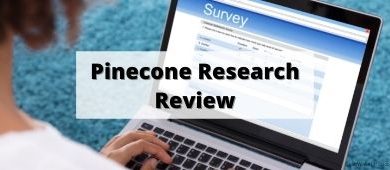State-by-State Home Energy Rebates from Inflation Reduction Act

We have two HVAC systems in our home that are likely within the last few years of their working lives.
They’re both A/C only using coolant that’s been “outlawed” (R-22) and were installed in the 1980s. They work fine, with the occasional replacement of their coke can sized capacitors, but we’re getting close to needing to replace them.
I know that there are some high efficiency units available today and spending the $15,000-$20,000 to replace each unit will pay off in efficiency gains over the next twenty years.
I was excited to hear about the Inflation Reduction Act and the various tax credits and rebates they were making available.
Table of Contents
The Inflation Reduction Act, signed into law in 2022, offers $8.8 billion in rebates and tax credits to homeowners and landlords who make energy efficient improvements to their homes. These are primarily improvements by way of new appliances and equipment to lower energy use versions. The Inflation Reduction Act is a federal law so it’s on top of whatever is available from your state.
First, the IRA extended and expanded certain existing tax credits, such as for residential solar and energy efficient home improvements, common referred to as the 25C tax credit. For example, the credit now covers 30% of project costs (up from 10%) and available annually. It’s now been renamed the Energy Efficient Home Improvement Credit and the credits can be up to $3,200. These credits were extended and include many of the energy efficient rebates you may be familiar with.
It also created two new provisions, collectively known as Home Energy Rebates:
- High-Efficiency Electric Home Rebate Act (HEEHRA), and,
- Home Owner Managing Energy Savings (HOMES)
You can get a rebate from either HEEHRA or HOMES, but not both.
HEEHRA
HEEHRA provides for up to $14,000 in rebates for qualified electrification projects:
- $8,000 for heat pumps
- $1750 for heat pump water heaters
- $840 for electric stoves
You can also get rebates when you improve your electrical panel, wiring, or improve your home insulation or sealant:
- $4,000 for “electric load service center upgrades”
- up to $2,500 for “electric wiring”
- $1,600 for basic weatherization (insulation, air sealing, and ventilation)
Depending on your income, as compared to the area median income, your incentives can be capped.
- Above 150% of area median income – you are not eligible for these rebates
- 80% – 150% of area median income – rebates capped at 50%
- under 80% – eligible for full benefits
HOMES
HOMES is not income restricted and based on modeled or measured energy savings:
- Retrofits with modeled energy system savings of 35% or more: the lesser of $4,000 or 50% of project costs.
- Retrofits with modeled energy system savings of 20-34%: the lesser of $2,000 or 50% of project costs.
- Retrofits with measured energy savings of 15% or more: the lesser of $100 per percent of energy saved or 50% of project cost.
If you are low income (less than 80% of area median income), incentives are doubled up to 80% of project costs.
States Must Apply & Be Approved
Despite it being a federal program, individual states must apply with their programs and get them approved.
As of April 23rd, only New York has had their application approved and the U.S. Department of Energy has awarded them $158 million for the program. The full details have not yet been released but we list what politicians have been celebrating on their websites!
Arizona, California, Colorado, Georgia, Hawaii, Indiana, Minnesota, New Hampshire, New Mexico, Oregon and Washington have also applied but we expect many others are in the process of applying as well.
We will list the details of each program below as they are released.
How to Find Your Area Median Income
HEEHRA has an income limitation applied to the rebate based on area median income.
The easiest way to find your area’s median income is to use this tool from U.S. Department of Housing and Urban Development. You need to locate your state, then county, and it’ll show you median family income. It’s based on Metropolitan Statistical Areas (MSA) but by searching at the county level, you are shown the MSA’s median income.
State-by-State Breakdown
Right now, only New York has had its application approved. We will add to this list as the details are released.
New York
According to U.S. Representative Paul D. Tonko’s website, homeowners could claim these extended rebates from the Energy Efficient Home Improvement Credit (formerly called the 25C tax credit):
- up to $2,000 for heat pumps, heat pump water heaters, or biomass stoves
- up to $1,200 for other weatherization installs and improvements
- $150 for a home energy audit
- $250 for a new exterior door ($500 total for all exterior doors)
- $600 for new exterior windows and skylights
- $1,200 for insulation
- $600 for an upgraded electrical panel
As for HEEHRA (up to $14,000),
- Heat Pump Air Conditioner/Heater (Up to $8,000)
- Heat Pump Water Heater (Up to $1,750)
- Electric/Induction Stove, Range, or Oven (Up to $840)
- Heat Pump Clothes Dryer (Up to $840)
- Upgraded Electric Panels (Up to $4,000)
- Upgraded Electric Wiring (Up to $2,500)
- Weatherization (Up to $1,600)
And for HOME, it’s the same as the federal examples:
- Retrofits with modeled energy system savings of 35% or more: the lesser of $4,000 or 50% of project costs.
- Retrofits with modeled energy system savings of 20-34%: the lesser of $2,000 or 50% of project costs.
- Retrofits with measured energy savings of 15% or more: the lesser of $100 per percent of energy saved or 50% of project cost.
Conclusion
This will take several years to roll out but we will update this post as the states get their applications in and are approved for the program.
For now, we’re personally in “wait and see” mode as Maryland gets its application in (our Representative John Sarbanes as a explainer on the IRA too). We earn more than 150% of our area’s median income so we wouldn’t qualify for HEEHRA. We’d then have to look at the HOME and improve our energy system savings by 35% or more and get the $4,000 rebate. Given the age of our system, I suspect this won’t be a significant issue.
It will, however, remain to be seen whether the HVAC companies will (quietly) increase prices a little to offset the federal rebate!
Other Posts You May Enjoy:
Don’t personally identify with your investments
Tribes are great when it comes to sports. It’s fun to cheer for something and wear its gear. It becomes dangerous when this tribalism extends into the realm of investing.
9 Apps Like MoneyLion
MoneyLion is a personal finance app offering cash advances, credit cards, and personal loans. You can also invest in fully managed portfolios as well as crypto. But MoneyLion isn’t the only fintech offering these types of services. Here are 9 apps like MoneyLion. Learn more.
Tello Review: Customizable Phone Plans for the Entire Family
Tello is a discount wireless provider offering customizable cell phone plans for the family. There are no contracts or additional fees, and you can add family members or change your plan at any time. How does Tello compare to other discount wireless providers, such as Mint Mobile and Twigby? Find out in this Tello review.
Twigby Review: Key Features, Plans, and Pricing
Twigby is an affordable cell phone carrier offering customizable data plans. All Twigby plans include unlimited nationwide talk & text, 5G nationwide coverage, access to mobile hotspot, Caller ID, Call Waiting, Call Forwarding, and more. How does Twigby compare to other discount carriers, such as Mint Mobile, Visible, and Tello? Find out in this Twigby review.

About Jim Wang
Jim Wang is a forty-something father of four who is a frequent contributor to Forbes and Vanguard’s Blog. He has also been fortunate to have appeared in the New York Times, Baltimore Sun, Entrepreneur, and Marketplace Money.
Jim has a B.S. in Computer Science and Economics from Carnegie Mellon University, an M.S. in Information Technology – Software Engineering from Carnegie Mellon University, as well as a Masters in Business Administration from Johns Hopkins University. His approach to personal finance is that of an engineer, breaking down complex subjects into bite-sized easily understood concepts that you can use in your daily life.
One of his favorite tools (here’s my treasure chest of tools,, everything I use) is Empower Personal Dashboard, which enables him to manage his finances in just 15-minutes each month. They also offer financial planning, such as a Retirement Planning Tool that can tell you if you’re on track to retire when you want. It’s free.
Opinions expressed here are the author’s alone, not those of any bank or financial institution. This content has not been reviewed, approved or otherwise endorsed by any of these entities.




